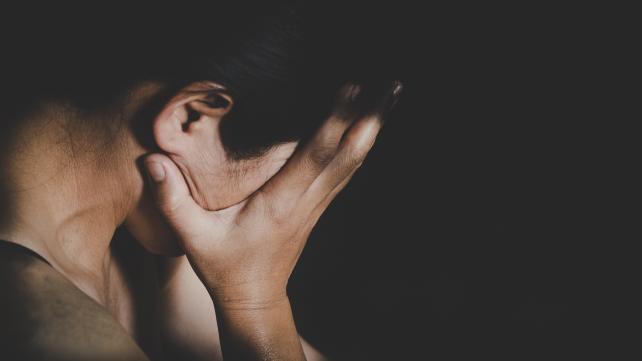
The fact is that domestic violence exists in the Muslim community. In 1999, the late Sharifa Al-Khateeb found that incidences of Domestic Violence in the Muslim community were about 10 percent in the report “Ending domestic violence in Muslim communities”. In 2000, Women Against Family Abuse (WAFA) reported that, “The rate of domestic abuse in the Muslim community is about the same as in the general population—about 18 percent…, It tends, however, to be more hidden.”
However, Dr. Robert Dickson Crane, the former head of the Legal Office at the American Muslim Council wrote as far back as 2011 that, “The figure of 18% for domestic abuse among Muslims seems very low, so it may reflect overly strict standards for identifying it. Presumably the definition requires assault (which does not even require physical contact), as well as battery, which does. But does it require a pattern of hitting? My estimate is that the percentage of Muslim men who have hit their wives at least once in their lives is closer to 90%.”
Facts and figures about domestic violence in the Muslim community are not as up to date as we would hope. Still, the preponderance of domestic violence in the Muslim community is such that Islamic centers, mosques, women and men’s organizations have found it necessary to address the issue. Imams in the U.S. have even issued fatwas against it at the risk of their own employment. In September of 2009, a directory of Domestic Violence Programs for Muslims Communities listed 66 organizations to address various facets of this issue. As the reporting of domestic violence, and the need for shelters and resources increased, the Peaceful Families Initiatives website currently lists DV programs for Muslim communities by state in the U.S.
The domestic violence realities for the Muslim Community in North America are greatly influenced by the percentage of immigrants from all over the world and the unique dynamics that exists within each ethnic and cultural community. Unfortunately, domestic violence facts for immigrants of all faiths in America reveal that
- Immigrant women often feel trapped in abusive relationships because of immigration laws, language barriers, social isolation, and lack of financial resources.
- A recent study in New York City found that 51 percent of intimate partner homicide victims were foreign-born, while 45 percent were born in the United States.
- Immigrant women often come from cultures that accept domestic violence or because they have less access to legal and social services than U.S. citizens.
- Immigrant batterers and victims may believe that the penalties and protection of the U.S. legal system do not apply to them.
- Battered immigrant women are less likely to have a certified interpreter in court when reporting complaints to the police or a 911 operator, or even when seeking information about their rights and the legal system.
Studies conducted by the Peaceful Families project found that in the Muslim community, the acceptance of family violence amongst immigrant families was quite striking. A study of 162 women and 40 men in 202 Arab-American homes with 98 percent of them being Muslim revealed that a man slapping his wife was acceptable if:
- She insults him when they are home alone – 34% of women and 33% of men
- She insults him in public – 17% of women, 43% of men
- She hits him first – 59% both men and women (Kulwicki and Miller 1999)
The Peaceful Families initiative also conducted interviews with Executive Directors of nine domestic violence organizations serving significant numbers of Muslim women and found that of the 1,962 Muslim women served by these nine programs, 85 percent of them were of immigrant background. The study revealed that
- 82% emotional or verbal abuse
- 65% financial abuse
- 49% spiritual abuse
- 74% physical abuse
- 30% sexual abuse (Alkhateeb 2010)
For this particular study the domestic violence organizations had 35 mosques in their geographic area with 12% connected directly or indirectly to their DV program and approximately 6 percent of the Imams had completed training in domestic violence.
When the Peaceful Families Initiative examined the psychological impact of domestic violence their results in a closed study of 190 Muslims seeking mental health counseling in Northern Virginia revealed:
- 41% were victims of some form of domestic violence
- 71% were women
- 12% were men
- 16% were children
- 60% reported some sort of verbal or psychological abuse in their lifetime
- 50% reported some sort of physical abuse in their lifetime
- 14% revealed some sort of sexual abuse
- 3% reported having a relative killed (Abugideiri 2007)
In addition, a study of 57 closed-case files from an American Muslim women’s shelter revealed that
- 37% had experienced multiple types of abuse
- 23% experienced physical abuse
- 12% experienced emotional abuse. (Abdullah 2007)
A study of 22 mosques in New York in 2005 found that
- 96% of the participants perceived the imam as a counselor
- 74% had sought counseling from imams for safety issues. (Abu-Ras and Gheith 2006)
With statistics as striking as these, the Muslim community must have a clear and fundamental paradigm shift based on the Holy Quran and the Sunnah of the Prophet Muhammad, peace and blessings be upon him. The sin of family violence is not just upon the abuser, but also upon those who would hide or explain away its reality.
Additional sources:
“Change From Within: Diverse Perspectives on Domestic Violence in Muslim
Communities.” Edited by Maha B. Alkhateeb and Salma Elkadi Abugideiri. Great Falls, VA: Peaceful Families Project, https://www.peacefulfamilies.org/statistics.html.
“Domestic Violence; An Islamic Response”. Islamic Horizons, March/April 2003 pp22-28
National Coalition Against Domestic Violence, Domestic Violence Facts.








Add new comment